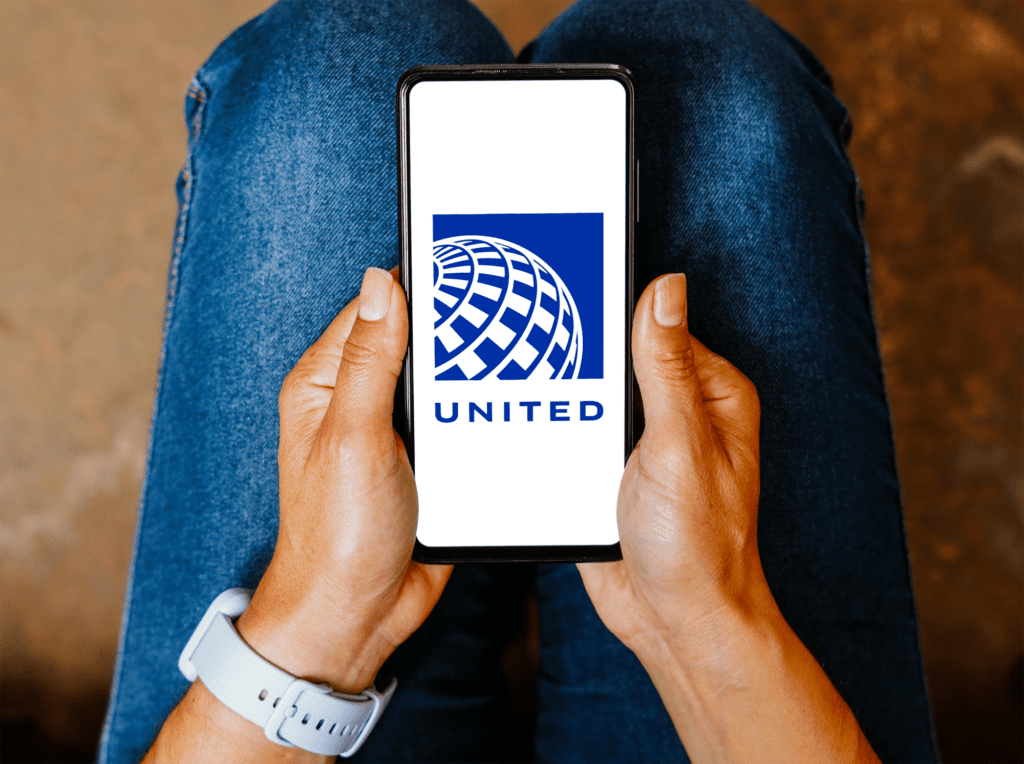United Airlines really wanted everyone who traveled to Cannes this year for the Lions festival to know it has a media network now.
Before takeoff on the 7:50 p.m. overnight Saturday flight from Newark Airport to Nice, France, an ad for Kinective Media, which is the name for United’s new media network, played on every seatback screen touting personalization, optimization, scale, privacy-safe targeting and measurement.
Meanwhile, sitting upon every seat was a navy blue sealed envelope of Kinective Media swag. (If you’re curious what was inside, it was a branded portable device charger, a free one-year subscription to an app that helps people manage their jet lag and a one-sheeter about a Kinective case study with TelevisaUnivision.)
To be fair, there were a lot of media and advertising people on board, although lord only knows what the regular passengers made of it all.
Kinective Media, which launched in early June, is the airline industry’s first ad network, and it makes sense that United went full bore in the south of France. Similar to last year, it was like retailer row down and around the Croissette.
Albertsons, Target Roundel, Kroger, Instacart, Ibotta, Chase (and other companies with their own media networks that I’m surely forgetting) all had a presence in Cannes this year.
Media network in the sky
Not that United would lump its new offering in with the proliferation of other ad networks.
“There’s what, around 200 media networks now? Looking at it objectively, I don’t think there will still be that many in two years’ time,” Richard Nunn, CEO of MileagePlus, United’s loyalty program, told AdExchanger during an interview on Magnite’s yacht in Cannes earlier this week. (I realize how bougie that sounds.)
Nunn was on the Magnite yacht because United is partnering with Magnite’s SpringServe to serve ads across United’s in-flight personal device entertainment platform, which allows travelers to stream entertainment content on their own devices.
But the media network also includes United’s app and website, airport out-of-home screens and seatback screens. United already has 100,000 seatback screens in place, with plans to outfit its entire fleet over the coming year or so.
“Unlike many other players in the broader commerce media space, we have an omnichannel opportunity, and we have scale,” Nunn said. “If you’re going to be in this space, you really need scale as a point of differentiation in a sector with so many players.”
United carried 165 million passengers last year, roughly 100 million of whom are members of the MileagePlus loyalty program. Based on average flight time, United estimates that Kinective has the potential to capitalize on around three hours of attention per person.
Fly in the ointment?
Like most new media networks on the scene (fill in the blank with retailer, grocery chain, financial institution, rideshare app, et al.), United is using first-party data as a selling point for advertisers, including loyalty data.
There’s also a lot of signal tied to travel habits: how frequently someone flies, their origin and destination, whether they’re flying for business or pleasure, whether they’re traveling with their family or whether they prefer sitting in the front or the back of the plane.
According to Nunn, all the data United uses for targeting is collected with permission. “And everyone has the option to opt out of what we’re doing,” he said.
Still, it’s a turbulent time for an airline to be getting into the advertising business.
In March, US transportation chief Pete Buttigieg announced a review of the data privacy practices of the nation’s 10 largest airlines, including United, Delta, American, JetBlue and Southwest. Among other things, the Department of Transportation is probing whether airlines are “unfairly or deceptively” monetizing or sharing personal data with third parties.
Programmatic plans
But privacy isn’t the only regulatory challenge.
Kinective Media is unique among ad networks in that it also needs to comply with Federal Aviation Administration policies. The FAA has specific security requirements for custom technology on airplanes.
Although United is using SpringServe as its end-to-end ad server, Magnite also had to build a custom solution to transcode media files to meet aircraft standards, said Mike Laband, Magnite’s SVP of platform revenue.
“Anything that comes into the plane itself is heavily scrutinized for security reasons, including media files,” he said. “What we did was to take something from the media world and pull together a solution that bridges the gap so we can serve ads into these different places.”
For now, Magnite’s main role is to help with creative workflow, campaign management, ad delivery and measurement. There is no programmatic, Laband said – yet.
But, according to Nunn, it’s squarely on the agenda.
“We’re going to go fully programmatic across our O&O, for sure,” he said. “Hence the relationship with Magnite.”















